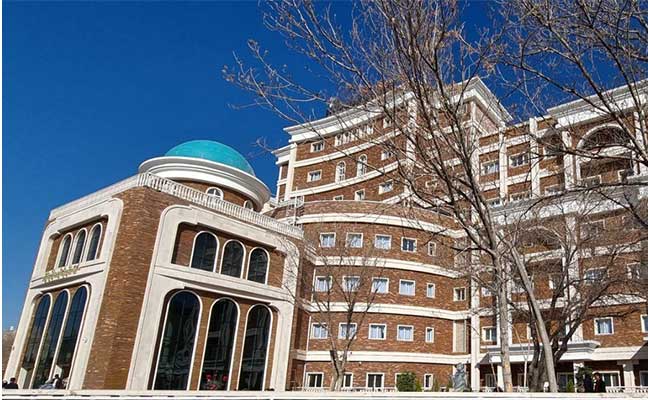Liver Transplant in Iran
- Duration: about 12 Hours
- Recovery: 4 – 8 months
- Clinic Stay: 7- 14 Day
- Anesthesia: General
- Total Stay: 7-9 Days
Liver transplants in Iran cost
are also much cheaper than in many other countries. The Iranian government subsidizes the costs of surgery, hospitalization, medication, and follow-up care for Iranian patients. For non-Iranians, the average cost of a liver transplant in Iran is $20,000-$50,000. This cost has several components, including the surgeon’s fee, the hospital fee, the medication, etc. A liver transplant in the US or Europe can cost up to $500,000.
Expert in Liver Transplant in Iran
- Iran is a leading country in liver transplantation in the Middle East. It has some of the region’s most qualified and experienced liver transplant surgeons.
- Many of them have received international training and recognition for their work. Iranian surgeons perform over 1,000 liver transplants every year. This high number has given them a lot of expertise and skill in this complex procedure.
- The success rates of liver transplantation in Iran are similar to those in developed countries.
- Over 85% of recipients survive at least one year after receiving a liver transplant in Iran. Since Iran has a unique living donor organ donation system, there is a shortage of organ donors.

Our Hotels
International care, local comfort
Accommodation is one of the services that Iran health agency provides for its clients. we are here to book hotel, hostel or recovery house according to your budget, hospital and clinic location.
to meet your comfort needs Booking of the accommodation is done in advance. After airport pick-up you will directly be transferred to hotel so it helps a lot to save your time.
Hospitals

Firouzgar Hospital
Hospital beds : +400
Legacy & Affiliation: Founded in 1951, affiliated with the Iran University of Medical Sciences. Comprehensive Services: 435 beds, 34 operating rooms, diverse specialties. Education & Training: Vital role in training interns, residents, and allied professionals. Specialties: Provides gastrointestinal, cardiac, cancer, and rehabilitation services. Research & Quality: A beacon in research, quality management, and patient rights. Intervention Services: Leading in cardiac and brain vascular interventions.

Shahid Hashemi Nejad Hospital
Hospital beds : +400
Established in 1957 with 190 beds under the Ministry of Health and Iran University of Medical Sciences, the hospital has evolved into a national center for Urology, Nephrology, Hemodialysis, and Transplants since 1985. Committed to excellence, it has implemented quality models such as EFQM, ISO, JCI, Clinical Governance, BSM, and National Accreditation, leading to significant advancements in both the quality and scope of its specialty services.

Abu Ali Sina Hospital
Hospital beds : +150
Ebnesina Hospital was established in June 2007, following the former Ebnesina clinic, which served patients since 1973. The hospital, named after the renowned 10th-century Iranian polymath and physician, Avicenna or Ibn Sina, is situated in the Sadeghieh district in Tehran. Despite the construction of several medical centers in the region over the years, Ebnesina Hospital remains the most esteemed one.
Liver transplant services In Iran to foreign patients
Many individuals who suffer from liver failure are exploring alternative treatment options outside their home countries due to the scarcity and high cost of donor organs. Some countries provide access to expert liver surgeons and transplant facilities with little or no waiting time for the operation at a more affordable rate.
To be eligible for a transplant abroad, patients typically need to bring a living donor who is willing to donate part of their liver.
Some countries only permit blood relatives of the recipient to be living donors, while others, like Iran, allow citizens of the same nation to be living donors.

Duration of liver transplant in Iran
Step | Description | Duration |
Pre-surgery preparations | Pre-surgery checkups, medical & legal approval | Minimum 7 to 14 days |
Surgery | The operation itself | 12 hours or more |
Post-surgery hospitalization for the donor | Recovery time in the hospital for the donor | Minimum 5 nights |
Post-surgery hospitalization for the recipient | Recovery time in the hospital for the recipient | Minimum 10 nights |
Post-hospitalization check-up in Iran for the recipient | Follow-up visits in Iran for the recipient | Minimum 10 nights |
consult with your doctor before making any decisions about traveling abroad for a liver transplant.
Preparing for a liver Transplant in Iran
Here is the information for preparing for a liver transplant in Iran:
Getting Medical Clearance
Both the organ recipient and donor must undergo comprehensive health evaluations in Iran, even if they’ve had checks done elsewhere. These mandatory pre-surgery tests include:
- Dental exam
- Cardiac health check
- Abdominal CT scan
- Upper GI endoscopy
- Full liver function blood work panel
- Evaluation by a hepatologist
- Testing for liver diseases like hepatitis and cirrhosis
Ideally, the medical clearance process takes about 12 to 14 working days. If any health issues come up during the exams, more time may be needed to treat those conditions before approval is given.
Navigating Legal Approval
Recipients and donors must have their identity and citizenship authenticated by their embassy in Iran. This verification, along with the hospital’s letter, gets submitted to Iran’s Ministry of Health to secure final authorization for surgery, typically in 7-10 working days.
Pre-Transplant Care
The patient may need to be hospitalized before surgery to manage complications of liver disease. This could involve treatment for swelling, infections, or nutritional support. The hospital will provide the necessary pre-transplant medical care.
Finding a Matching Donor
Finding a Matching Donor First, you need to find a person who is a suitable match for you and can donate part of your liver to you. As we mentioned before, your donor must be a citizen of your country. While reviewing candidates, you will need the following tests to check if their liver is a match:
Blood Type Test:
You can receive a liver from compatible donors only:
Recipient blood type Donor blood type O O only A A and O B B and O AB All Blood types The Rh factor (+ or -) of the blood does not matter. If the donor’s blood type is compatible with you, the donor can take the next test: tissue typing.

Risk of Liver Transplant in Iran
Surgical risks
- Bleeding during or after surgery
- Bile duct complications
- Blood clots
- Infection at the incision site or within the abdomen
- Rejection of the donor’s liver
Rejection risks
- Hyperacute rejection within hours/days due to blood type incompatibility
- Acute rejection within weeks/months when the immune system attacks the new liver
- Chronic rejection over the years leads to cirrhosis
Infection risks
- Increased susceptibility to bacterial, viral, and fungal infections due to immunosuppression medication
- Potential reactivation of dormant infections
Other risks
- Adverse reactions to anti-rejection medications
- Increased risk of certain cancers
- Recurrence of original liver disease
- Blood vessel or bile duct problems
- Diabetes arising from immunosuppressant use
- Kidney dysfunction
To mitigate risks, patients need to strictly adhere to their prescribed post-transplant regimen including medications, lifestyle changes, and ongoing medical management. Close monitoring for the rest of the patient’s life is also crucial to preserving the health of the transplanted liver.
For patients in need of a liver transplant, Iran has an exceptional treatment solution. Expert transplant specialists in Iran execute many complex liver transplants on both children and adults each year. Iran’s liver transplant survival and success rates rank among the best globally, showcasing the country’s advanced expertise in liver disease and transplantation. Whether a partial liver transplant or full organ transplant, Iran has the technical capacity, knowledge, and experience to provide world-class liver transplantation results at fair pricing. In addition, to affordable organ transplant costs, Iran delivers exceptional treatment quality and positive outcomes. For those needing a life-changing organ transplant, Iran checks every medical box.
faq about Liver Transplant
Why do people need liver transplants?
Common reasons include liver failure, cirrhosis, hepatitis, fatty liver disease, inherited diseases, liver cancer, and trauma injuring the liver.
Who qualifies to be a liver donor?
Both living and deceased donors can provide livers. Ideal donors are healthy, compatible matches, typically from biologically-related family or voluntary non-related donors.
How many people need liver transplants each year?
Globally there are over 150,000 liver transplants needed every year. In Iran, an average of 1,200 patients are on waiting lists needing transplanted livers.
Where do most liver transplants occur in Iran?
Major transplant centers performing liver transplants are based at large university medical institutions like Tehran University of Medical Sciences, Namazi Hospital, Iran University of Medical Sciences, and Shiraz University of Medical Sciences.
What is the average wait time for a liver transplant in Iran?
Due to limited organ donations, average wait times for liver transplant in Iran typically exceed 1 year after getting listed. Higher priority candidates may get transplanted sooner when livers become available.
Are there risks with liver transplantation?
Yes, possible complications include bleeding, infection, bile duct issues, blood clots, organ rejection, and liver disease recurrence in the new liver. Anti-rejection medications also have side effects.
What is the typical cost of a liver transplant in Iran?
Estimated costs can range from $30,000 to $150,000 or more for the procedure, medications, and hospital stay combined. Some governmental aid and insurance subsidies may assist.
What is the expected 1-year survival rate after liver transplant globally?
Thanks to surgical advancements, the current 1-year survival rate post liver transplant is 90% or higher, with 5-year estimated survival around 75%.
How many liver transplant centers exist in Iran?
There are approximately 9 active liver transplant programs based at major hospitals and medical schools across Iran presently. This capacity does not meet demands.
What is the average lifespan for a transplanted liver?
With careful post-transplant care and medication compliance, a well-functioning liver transplant can last upwards of 20 years or more before any potential replacement may be needed.


